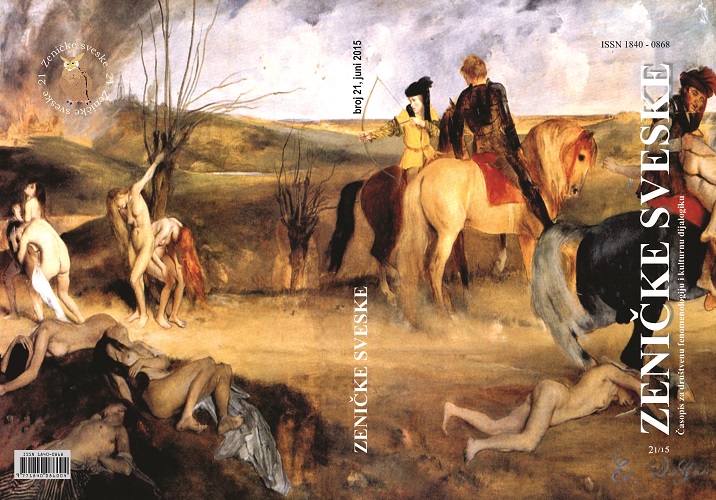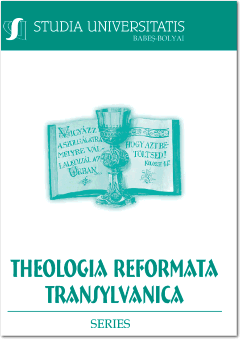Author(s): Levente Horváth / Language(s): Hungarian
Issue: 1/2019
The Fall is manifestly the distortion of the imitatio Dei. It demands the safeguard of “the move from above towards below”, the paradoxical kenosis orientation of the divine incarnation and impulse, which proves to be the total, diametrical opposite of the absurd striving of the obscene human hubris in its aggressive and ego-centric “move from below towards above”. This requires a radicalism that is not just an attempt to formulate ethics but, specifically, to create a specific area of counselling, namely, contextual counselling. Similarly, in a truly theological ethic, God must not be merely considered, but manifest as the Foundation and Alpha of any contextual counselling. This statement immediately imposes upon us and forces us into a new perspective: that we can no longer talk about God but, from now on, only talk to God. This must be the non-possessive default mode of true theological discourse in opposition to classical objectifying expressions.What are the staggering implications of this? If the counsellor does not begin a client’s session by talking to God in a direct way, or ceases to talk to God, then it becomes impossible to talk to the client as well. Moreover, in ceasing to talk to God and the client, one ends up merely addressing a vague monologue to oneself in a devouring way with the Self alone, and as such, is essentially not talking at all anymore, not even to oneself. Emptying the theological logos of the personal aspect of the relational koinonia with God severs the core concepts and teachings of Christianity from their context and from their participatory character. Fellowship in the Body of Christ demands participation in the fellowship and participation (perichoresis) of the Persons of the Trinity as much or more than in each other’s mission, commission, and existence.Professor Dr. Sára Bodó has inspired me (especially concerning grief and exploring different approaches to counselling in the very specific context of comforting people who have lost a loved one) to try to examine a wider context and perspective in seeking a model from the counsellor’s point of view. This leads to a conviction that contextual therapy and theological commitment discover that nothing can be closer to a genuine approach than the a priori approach of the contextual per se in tackling the human condition. The “Trinitarian Family” model has to be at the forefront of our investigation, while the incarnational model makes relevant the filial aspect of the Sonship of the Son, pointing toward and including our filial relation toward the same Father, as a result of the adoption of mankind into a sonship state and into the family of God. This is qualitatively far greater than simply regarding people as sinners. This adoption as described by systematic theology was achieved through and by the ascension of the Son into heaven and his sitting at the right hand of the Father. In the works of Iván Böszörményi-Nagy, the founder of so-called contextual family therapy, the emphasis falls on what he developed and called multi-directed partiality. This concept can be understood as the main methodological principle of contextual therapy as such. In this study, I have tried to point to the Trinitarian model through which we can understand family relationships on the basis of the Trinitarian and incarnational model. The self-differentiations from each other of the three Persons in the Godhead are also a calling for a multi-directed partiality in an approach to human personhood within the family context. The dialogical means of affirming and differentiating the relationships within the Trinity can be applied to evoke a dialogue of responsible mutual position-taking among family members. In our case of counselling responsibility, this consists of a sequential turning towards member after member (even absent members), in which both acknowledgement and expectation are directed at them. This is definitely an alternative to the more common “neutrality” or unilateral partiality of other approaches. In the traditional theological handling of the Trinity, and of the incarnational and salvific work of the Son, I have traced this same unilateral partiality with a concern to avoid the pitfalls of those conceptually valid, yet relationally void notions, and even dogmatic frameworks, which are construing the human condition in less relational terms, i.e., in the understanding of the divine imago Dei. The Trinity and the descending move from above of the Son’s incarnation need to treat each Person from the point of view of each: the relational standing of each is giving their real meaning and significance as divine Persons in their unique and common contexts. Thus, each Person is serving also as a genuine context for the others, and even for us, as we find ourselves grafted into the relational life of the Trinity by staggering grace. This is no more and no less than recognizing perichoresis as the foundation of genuine human community (the countercultural position and mission of the Church), against Western worldviews and the narrative of an individualistic society as a whole.
More...


